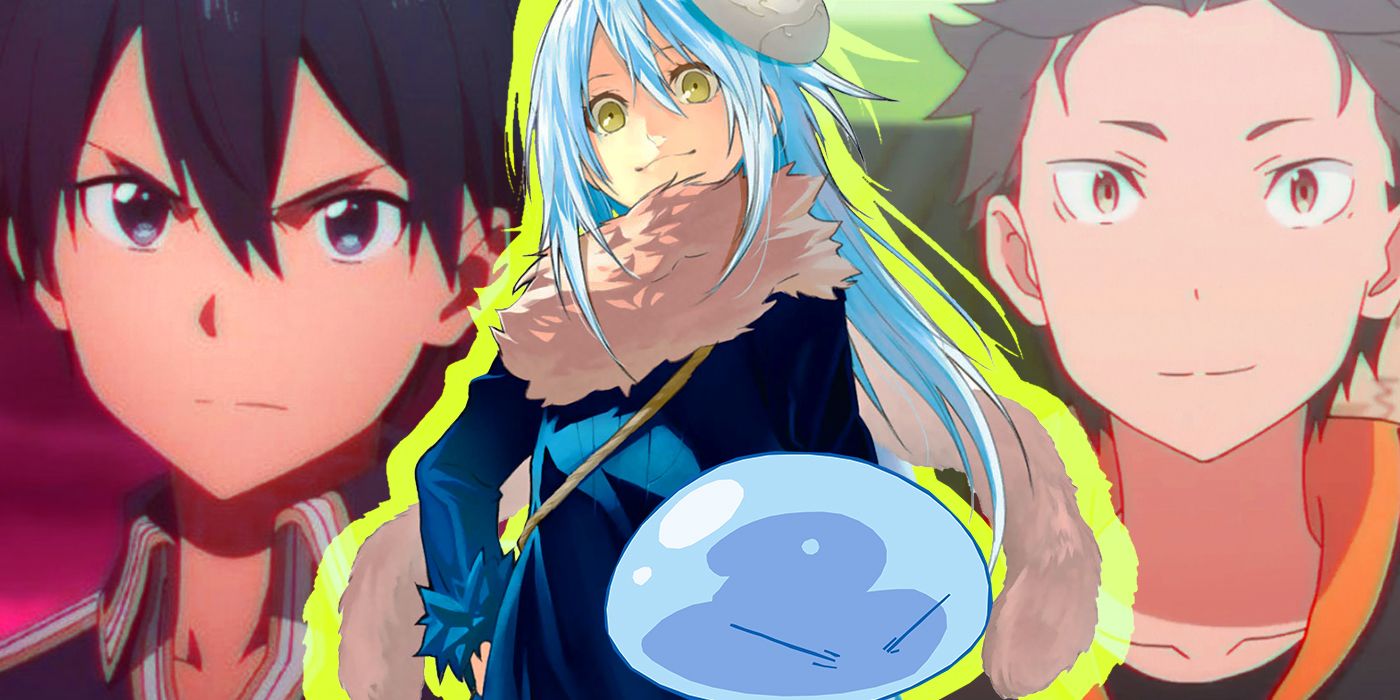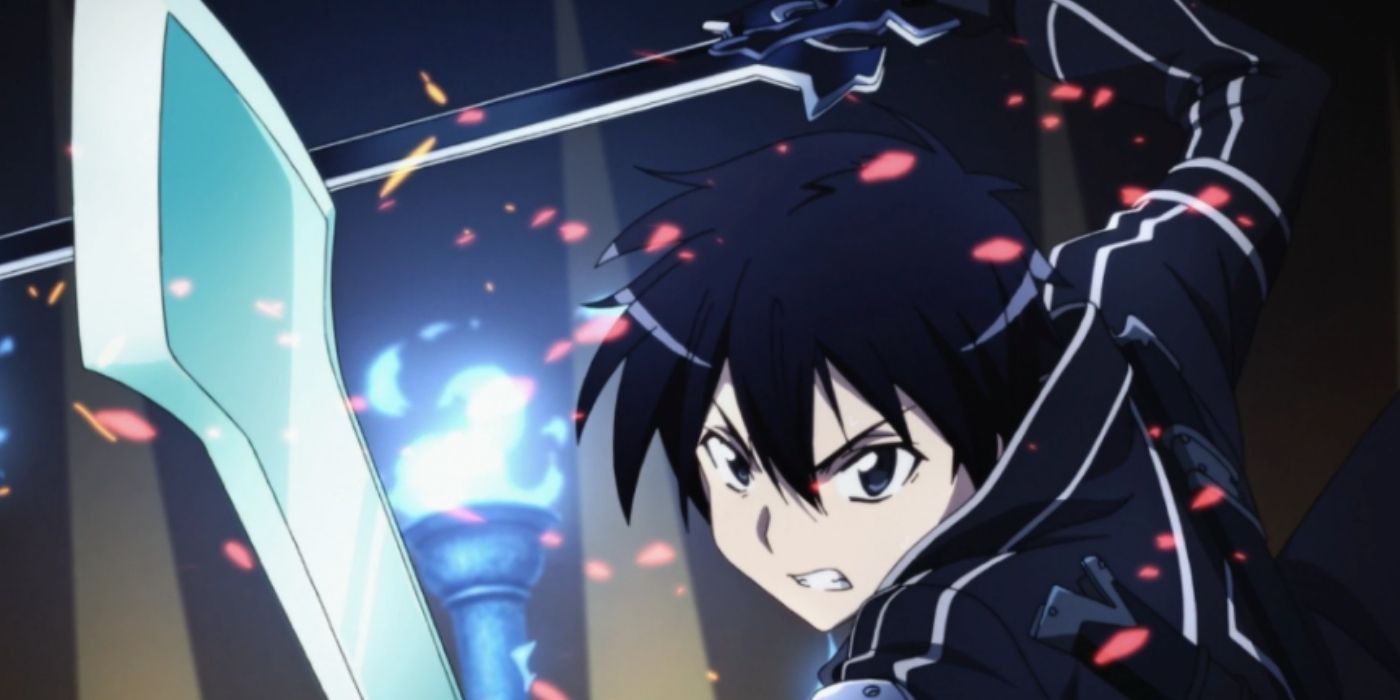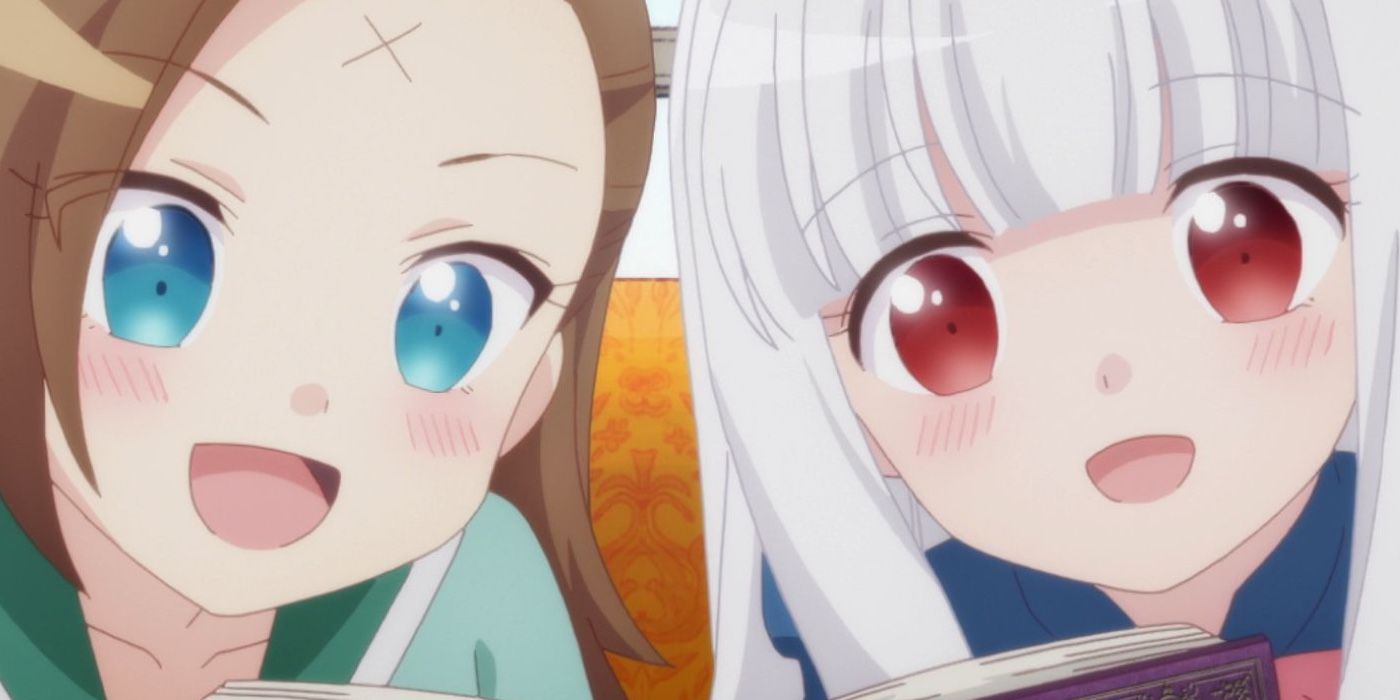The isekai genre, centering on tales of ordinary people whisked away to fantasy worlds, has experienced a surge in popularity over the past decade thanks to titles such as That Time I Got Reincarnated as a Slime, Re:Zero, The Rising of the Shield Hero and certainly Sword Art Online. But is this genre going stale due to an over-reliance on male power fantasies?
Any genre of fiction can get stale if the creators get too comfortable with their most successful ideas and recycle them to repeat their success, unwilling to take risks with fresh new ideas. Many anime fans might agree that the isekai genre is rapidly becoming same-y. However, looking to the genre's past offers many examples of more distinctive isekai series, particularly those with female protagonists, and a number of recent hits offer promise for more diversity of both characters and storylines in the future.
The Problems With Male Power Fantasy Isekai
Isekai has tons of potential as a genre. Such stories can act as escapism of the highest order, depicting bored or frustrated students and office workers cutting loose in a colorful fantasy world where the sky is the limit and the protagonist can rebuild their life from the ground up. Where problems occur is when creators find a few tried-and-true storytelling methods and cling to them too repetitively -- especially when some of these ideas can be harmful or sexist.
While some isekai series are more diverse or distinctive, many fall back on tired power fantasy cliches. Your typical isekai lead these days is an adolescent male, often a hardcore gamer and/or NEET, who ends up in a fantasy world surrounded by elf babes, loyal squadmates and a burly blacksmith who'll forge any sword for them on command. Often these series have a simplistic approach to the "sandbox" nature of isekai and depict the main character cutting loose as a gamer who wants to become the next overlord of the fantasy realm (or just build a harem). The main character also tends to be a self-insert, a generic template for the expected viewers to color in with their own personality. Kirito is a classic example of this, but he's hardly the only one. What's the point of exploring a fun fantasy world if the lead character is going to be dull and predictable? It feels like a waste.
Where these male power fantasies can cross the line from dull into harmful is when they indulge in misogynistic tropes. Sometimes this takes the form of treating female characters as damsels in distress, such as Asuna in Sword Art Online. Sometimes it's objectification for the sake of cheap fan service. Some particularly controversial isekai series cross the line into explicitly anti-feminist messages and hateful portrayals of women, such as The Rising of the Shield Hero and its "matriarchy," wherein Princess Malty falsely accuses Naofumi of sexual assault in order to get him exiled from the kingdom. While Season 2 of Shield Hero might offer improvement in that regard, it doesn't seem like these sorts of sexist isekai shows are going away any time soon.
Fortunately, some isekai series take a more original and progressive approach to power fantasy storytelling. For example, That Time I Got Reincarnated as a Slime seems cliche at first, but a few twists freshen things up. The main character was a selfless, mature and polite salaryman in life rather than a bored gamer NEET. Rimuru Tempest seeks not personal glory or power, but to build a new, more tolerant nation where intelligent monsters of all races can live together in harmony, a truly commendable goal. Unlike Kirito and other self-insert characters of his ilk, Rimuru actually earns his "everyone loves me" status.
How Isekai Heroines Create A New Perspective
The isekai genre was not always so focused on male power fantasies. Most classic isekai series from before Sword Art Online, such as Escaflowne, Magic Knight Rayearth, Fushigi Yuugi and Inu-Yasha, had female leads. These shows had both exciting action and well-rounded heroines, showing that isekai protagonists don't need to be limited to the likes of Kirito or Naofumi Iwatani. For example, Fushigi Yuugi's heroine, Miaka Yuki, started off as a seemingly ordinary 15-year-old girl, but soon enough, she blossomed into a standout heroine in her own right. She is a bit naive and sentimental at times and has an amusingly huge appetite, but she's also highly outgoing and friendly, making her easy to like (contrasting sharply with Kirito and Naofumi). Similar things can be said about Kagome Higurashi of InuYasha fame, an isekai heroine with a strong will and a big heart.
Perhaps the pendulum is starting to swing back towards well-written female protagonists again, in light of series such as Ascendance of a Bookworm and My Next Life as a Villainess. Alone, the sex of the main character won't dictate an entire franchise's plot or quality, but a diversity of perspectives allows for more variety in the stories that can be told. These heroines have constructive goals and interests, allowing the isekai genre to focus on something besides slashing orcs apart with swords. After all, any story can be explored in anime, and these isekai heroines prove it.
Myne, the young lead of Bookworm, is seeking to make paper and books to spread literacy to the masses (and indulge her own hobby). In My Next Life as a Villainess, Katarina Claes is trapped in an otome game and is seeking to escape her doom as the villainess by rewriting everyone's love lives to bring a happy ending for all, even the most wicked girl in the story -- Katarina herself. Like many isekai, it's a harem anime, but a more diverse one than usual. Then there's the arachnid lead of So I'm a Spider, so What?, who's more interested in grinding levels than anything, and being reborn as a spider is a humble role indeed. No elf babes will join that harem.
All this is a totally new perspective than Sword Art Online or Shield Hero, with entirely new stakes, new goals and new character types along the way. The isekai genre is finally breaking some new ground again.



